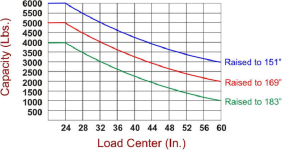MossyDell
Silver Member
- Joined
- Jul 25, 2002
- Messages
- 236
- Location
- southwestern Virginia
- Tractor
- B2601 (2021) B6100E (1988) B2100 (1991) JD970 (1998)
I totally agree. Most tractor dealers are sorry. In many ways. An underlying problem is they think they are selling equipment. They are FIRST selling information, or should be. They can move a lot more product that way. And they should be selling service too, which starts with asking and informing.I know. Anyone that knows me knows I am NO fan of the tort lawyer, BUT in this case if someone had just taken the time at the dealership to warn this individual (however ignorant he may be) about the dangers of using the bare tractor without any ballast and insisted on selling him at least a ballast box and at least talking to him about loaded tires or wheel weights he might still be alive. In the big scheme of the tractor purchase even for a low end tractor like the 3038e, the additional couple hundred bucks for a stinking ballast box might have saved him. At least he would have had the chance to think a little about it.
We don't know what exactly happened and under what circumstances he rolled his tractor over. I can guess. My guess would be he lifted a load with the FEL, and he had the loader bucket well above the hood of the tractor like all NEW tractor owners do (because they are ignorant of the dangers) and he turned the tractor on slightly uneven ground or the high side tire found a protruding rock or the low side tire found a hole and the tractor overturned. He probably wasn't wearing a seat belt, and we don't know about the ROPS, but in any case he became trapped under the tractor and was crushed.
How many pictures of rolled over tractors have we seen here on this forum? Plenty, that's how many. And where is the loader bucket in relation to the hood of the tractor? Well above it in almost all cases. I grew up as a child around tractors and machinery, and had a pretty good idea of how to stay safe around them, but even I had a few close calls. I never rolled one, but I sure had the rear tires come up off the ground because of improper ballasting. Lessons learned, don't do that again.
Dealers cannot overcome all cases of ignorance. That poor guy probably didn't know how much he didn't know. But dealers must not assume the reason a guy hasn't added fluid, wheel weights, ballast is because he already has that covered.
Even if he seemed like someone who wasn't going to spend one penny extra, the salesman might have brought up ballast and even mentioned use of the seatbelt. He might have added to the sale. And saved that guy's life.

